Making your dreams take flight | info@wild2fly.co.za | +27 83 393 3938
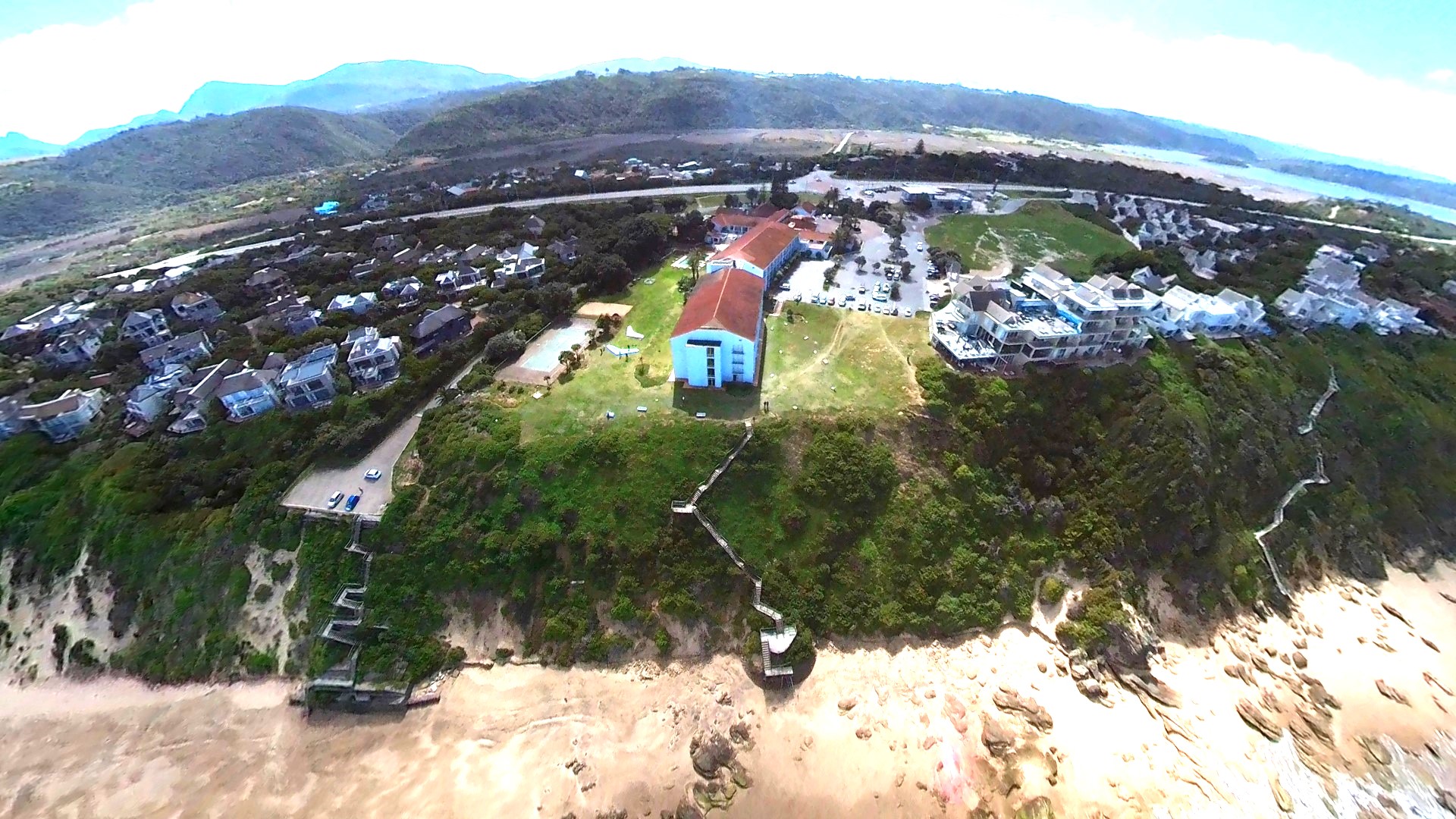
Beach Hotel Site Briefing.
Beach Hotel tips and flying.
This site has a rich and long history in the SA flying community. Way back, before flying started some guy had a great idea and built, what was then the Flat Rock Motel. A new idea for travellers along the N2 to over night before continuing their journey. The location was idyllic for flying as it provided easy access to the coastal cliffs of Wilderness. In November of 1974 a very young Cory Venter braved the launch in his new 80-degree nose angled hang glider. It was a foefie but the start of flying in the Wilderness area. Cory recalls that there was a sewage reticulation plant where the current Views Hotel stands, but it was the highest spot so that was where the boys built their hang gliding ramp. In the early 80’s some poor guy ended up being blown backwards and ended up in the very raw sewage part of the plant. Apparently, the wind was always in the right direction when the guys flew so the plant never bothered the pilots! (Except for that one mishap!) lol. Soon the Holiday Inn group took over the Lodge and then many years later it became the Pearl of Wilderness before making way to the current Beach Hotel. Some ten years ago the Views Hotel proclaimed their piece of ground and demolished the old hang gliding ramp, forcing all pilots to use the flatter lower launch spots that we are so familiar with today. It is one of the oldest and most established sites in the country.
BH Views

Today with both hotels surrounding the launches it makes for a very unique flying experience. On those sweet days it gives a real Mediterranean feel of coastal flying and when the water is clear and turquoise one can even imagine you are flying some tropical island coastal cliffs while the Hotel holiday resort finishes off the picture! However, these awesome buildings that give the flying its unique character, also brings with them some flying complications – it is no wonder that there are very specific pilot experience restrictions to the site. Complications in the airflow dynamics around the launch and top landing areas, as well as the limited beach landing areas have given rise to the current min requirements. Restrictions are no students (PG) and Basic rated pilots with 5 sign off flights from a knowledgeable local pilot at the very least. Even experienced non local pilots should take head of these. ?
Best winds are SSW around 10kts but can cope with WSW to SE for some more experienced pilots. I recommend not flying in anything more than 45 cross.
Local Rules

Flight planning!
Initial assessments / safety / risk issues. (Please note - these notes are not necassary exhaustive. ;)
Take a moment to walk to the front of the launch and make an assessment first – check the wind strength and direction – compare these to forecasts (forecasts versus actuals) and have a mental plan in your mind of what you are going to do. Your launch area, launch type, expected flight and very important the best landing approach options. Have that mental map done first – it will help to free your attention to other things later on. (Though be flexible enough to change your previously assumed best approach if conditions or circumstance change). Use the next info to help you in your site flight plan and safety assessment. Oh yes, there is a grumpy old man who lives in one of the last houses to the west of launch – it is just before you cross a gap where the N2 comes close to the beach. Please stay away from this area of you are low. (If you are very high then nobody cares!) ?
The site has some prominent buildings that create interesting complications in the airflow dynamics around the launch and top landing areas. Most notably the venturi and rotors.
- This particular venturi is famous and quite a few experienced pilots have first-hand experience of this one. (Including me!) ? The set-up is pretty obvious with the flow accelerating between the Beach Hotel and the Views Hotel. Typically 5-10kph differences between the airflow in front of launch versus between the two buildings close to the parking lot!
Venturi
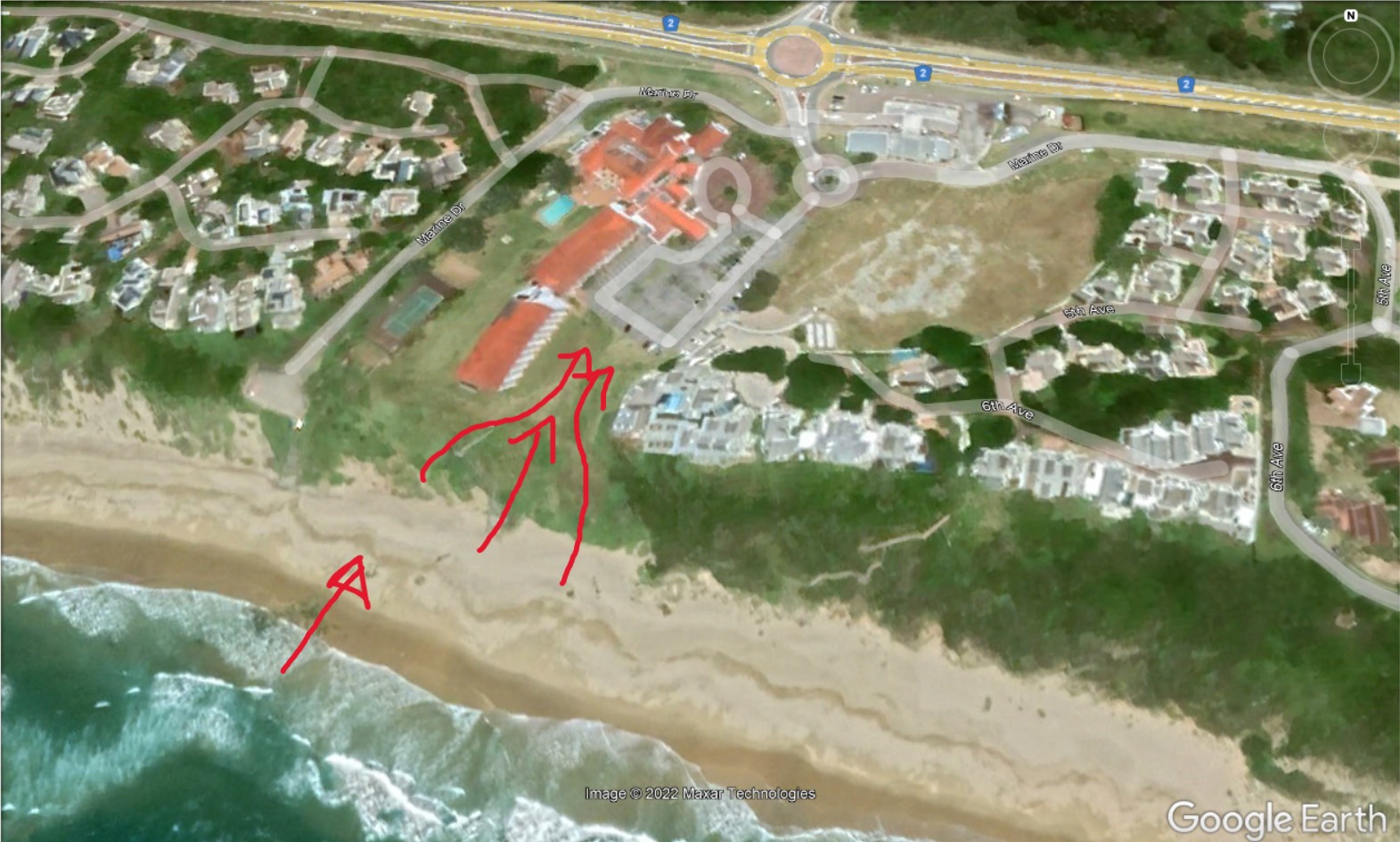
- And then the Rotors from over-the-top flows and not to miss the often overlooked, side flow rotor turbulence – which also have caught many pilots – most often and thankfully, while on the ground. These have caught several pilots so pay special attention to these. A very special note here – most pilots miss the so called “bow wave” effect of the windward side of the hotel. Even in straight in winds the winds are deflected sideways around the pointy bit as the flow diverts around it. Get your glider too close and the side gusts will collapse the side of your wing (the side closest to the hotel). This happens on the ground too if you lay your wing out too close to the hotel. Keep this flow in mind in some of the landing approaches too! ?
SW rotors

S rotors
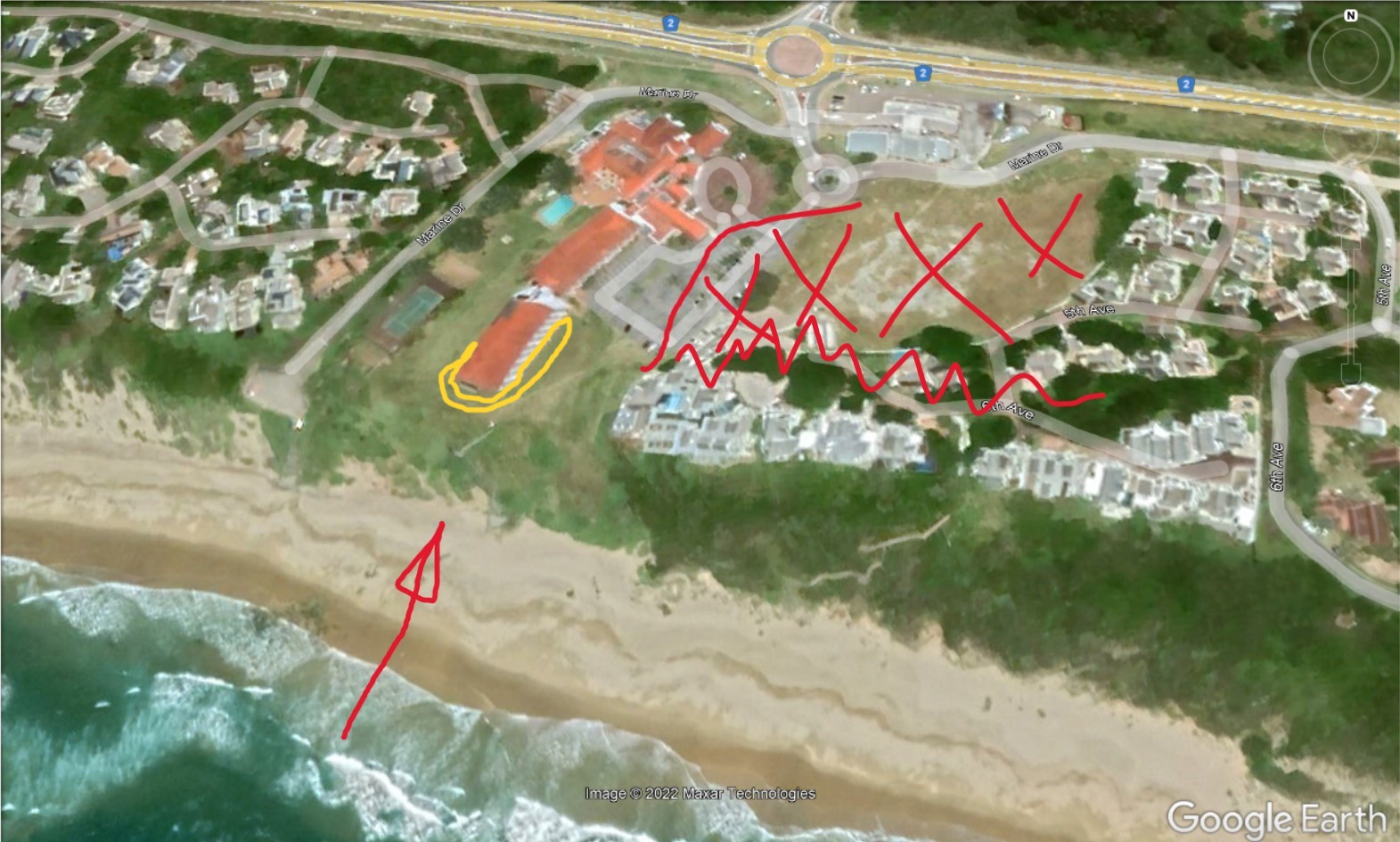
SSE rotors
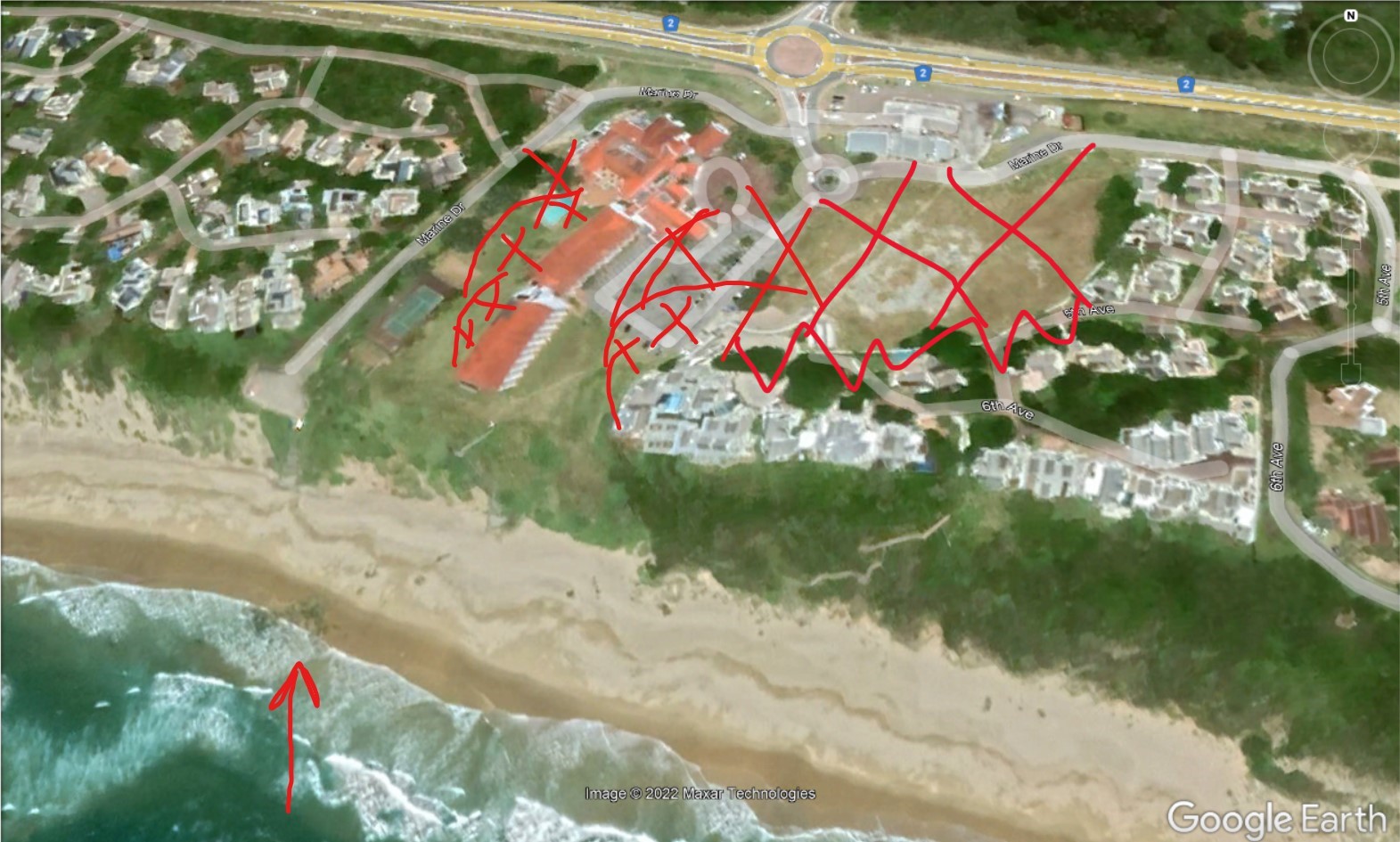
- Watch the ocean for any signs of wind. This is very difficult to miss however, there are times when even experienced pilots have been fooled in reading the wind signs wrong. Often strong SW pulses push through in the summer months that move in over a calm ocean (Note calm ocean!) The end result is that the pilot is fooled into reading the approaching wind lines with few white caps as not being that strong while it is. The wind has just not had enough time to whip up the ocean into the usual strength markers of loads of white caps yet! Be careful of these!
- The ocean cliffs and beach lay-out create interesting bottom landing options. Please take note of what the tide is doing! Oh and how many pilots have landed in the ocean at this site!? (Hang gliders and paragliders). From the launch to the east there are no bottom landing areas at high tide. Most often the wind will be from the SW which means if you turn left the first turn is slightly down wind (Pilots turn this way at this site because the higher cliffs are to the east of launch). However, but, please, etc etc, do not turn to the left after launch in weak or mild conditions, unless you are absolutely sure you will get up (Especially for hangies!) Many have thought they would get up (so sure!) only to realise their mistaken judgement-call too late. Then when you turn back to the west to try and make the small beach back at launch, you find yourself flying into the cross wind and cant match your previous downwind glide! In the drink you go. Lo. Seriously guys, this has happened more than I care to mention – pilots have been lucky to escape with their lives…
- The direction and strength should dictate the launch spot and technique. There are two launch areas: the first to the east of the Beach Hotel (in-between the two hotels) and the second is to the west of the Beach Hotel (The side of the tennis courts). In light or weak conditions use the in-between Hotels launch and in strong conditions use the tennis court side. In moderate and strong SSE winds use the tennis court side – you have more margins for any errors or mistakes you might make. The tennis court side is popular for hangies since this provides the least rotary area for rigging.
Approach 1

- The direction and strength should dictate the approach pattern for landing. There are mainly three wind directions – either more west, or straight up, or more east – each with different approach options.
- The classic SW approach. The landing area is the clean air slot between the hotel and the tennis courts. This is my favourite approach if I am high enough. There is a slight variation to this one – also provided you are high enough. Conditions need to be strong. Not the rotor and turbulence areas.
- Also a typical approach but it is more complicated due to the venturi and rotor areas. The pilot needs to be extra vigilant not to venture outside of clean air path. In both these approaches, once the pilot has turned into wind control your glide path with the use of brakes (If you are in the right position the winds are mostly smooth so deep brakes are often used and useful! Of course, if you apply too much brakes you deserve what is coming to you!) ? The butterfly technique can be used here to if needed.
Approach 2
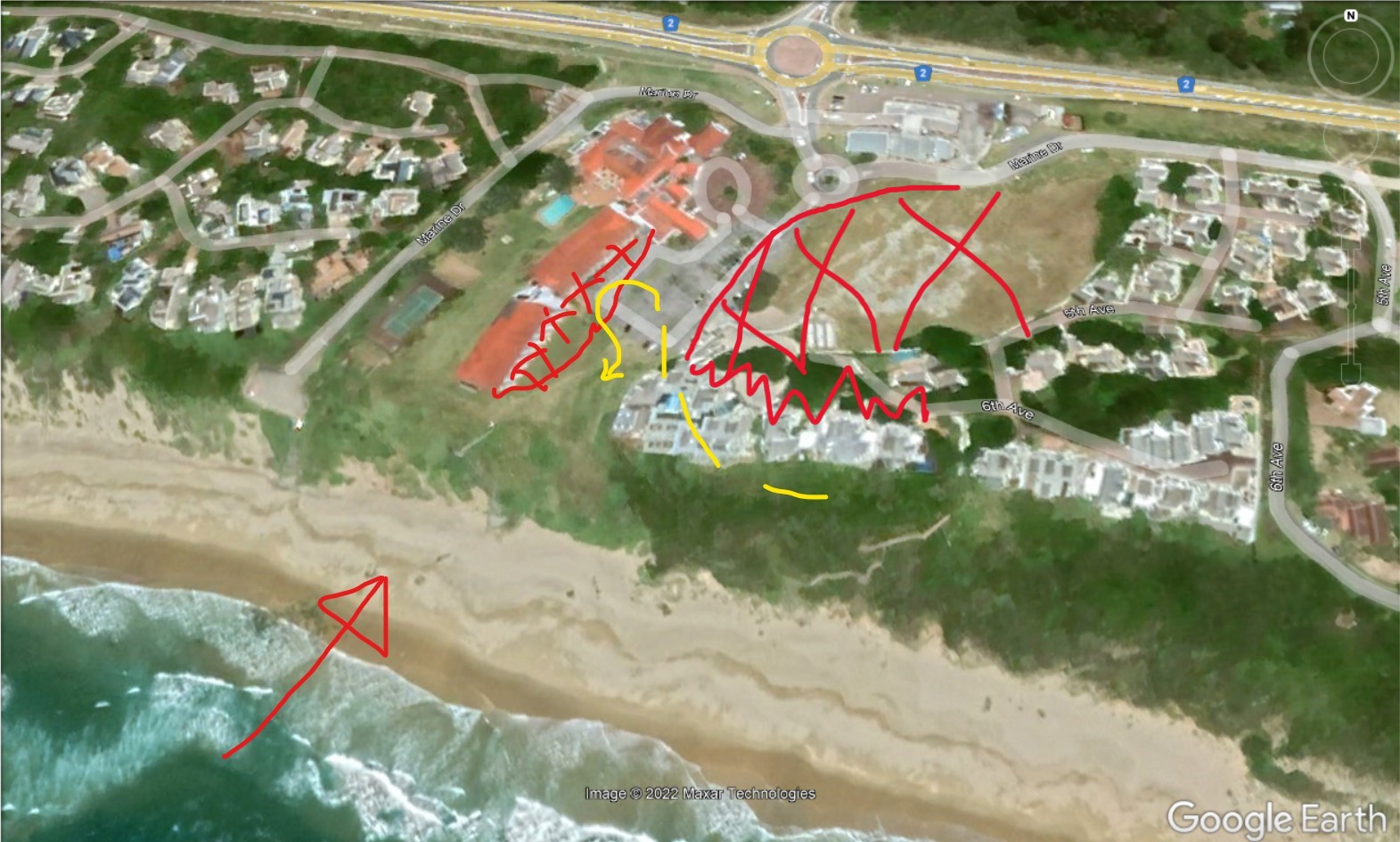
- This is the SW light wind approaches. There are two main ones – one to land between the two hotels the other to land near the front of the tennis court launch. In these light conditions there is not too much turbulent flows of the bow effect from the windward side of the hotel to be too concerned about. However, plenty pilots wings have caught onto the hotel gutter before! Don’t become one of those – if you are lucky you might just need to replace a line! ?Do your approach so there is no need to come in close to the front of the hotel at all. And finish that final turn into the wind. ?
SW light wind approach
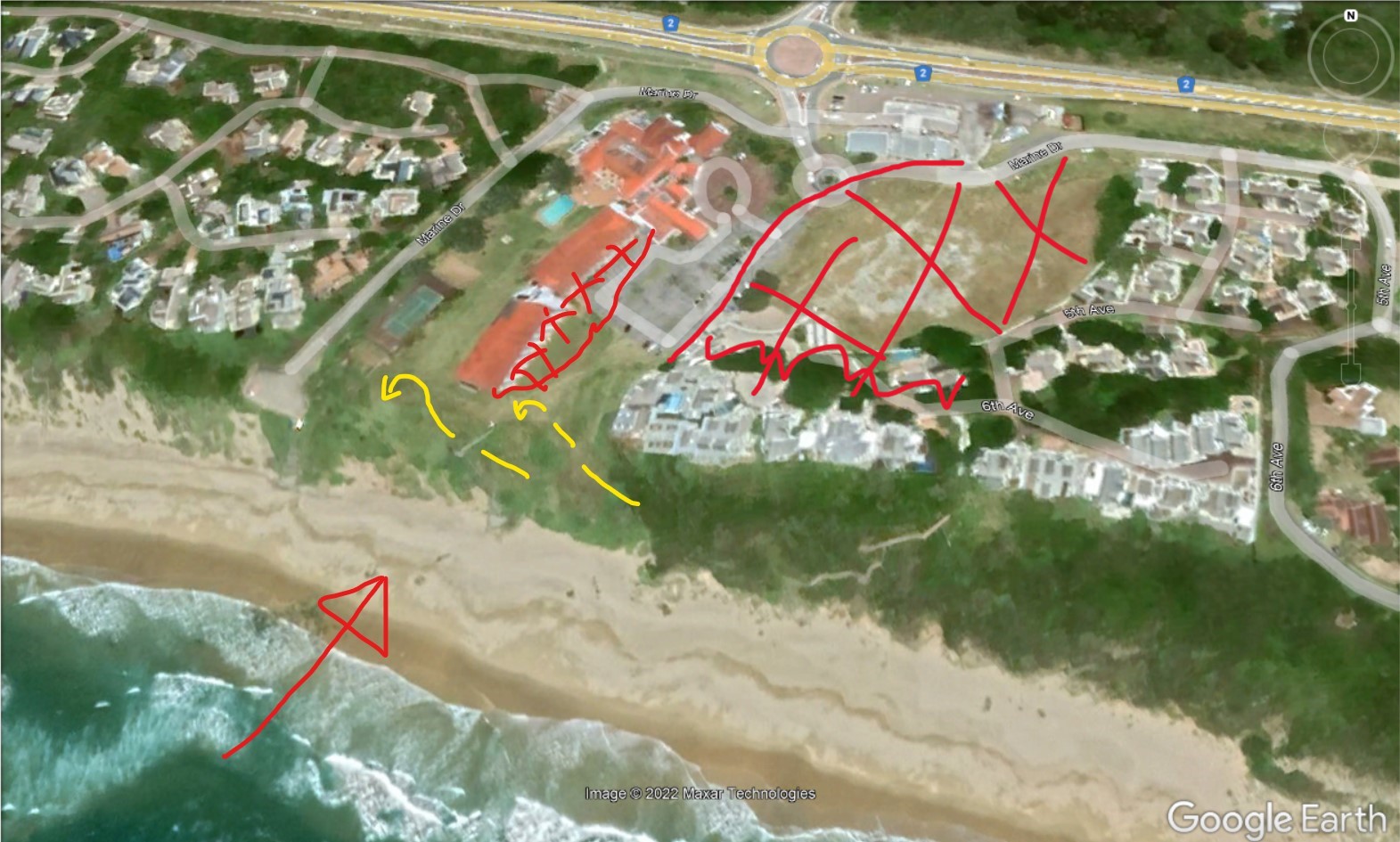
- The unusual SSE wind approach patterns – again the two landing spots are between the two hotels and then in front of the tennis courts. Pay particular attention to the rotor areas in this wind direction. The turbulent areas are different so you cannot use the usual SW approach patterns! Beware! Even if you are high be careful of going too far back – you need to land near the front to avoid the turbulence.
- If you do go down then try land at the bottom of the steps to minimise your walk. However do not do foolish things just for the sake of saving a short walk! (like turning down wind to get closer to the steps – lol). Pay attention to the tide and once you are down don’t dawdle – lift your wing and move well clear of any possible wave actions – things like rogue waves do exist and happen often on this wild coastline! For the hangies we recommend landing way off to the west at the end of the houses for a shorter carry up the dune. Alternatively, the lower carpark steps are also the shorter carry – you just need to drive to the carpark to get your lawn-dart. ? A note for them here – in weak conditions when you are just scratching it is often worthwhile to run downwind (if it is SW) to the Kleinkrantz CarPark for an easier retrieve. It is important that you don’t turn back into wind while on this cross-downwind glide – invariably you fall out the lift in the turn and are down in a jiffy with a super long walk carrying the noodle! ?
Launch tips
- Positioning is king!
Strong winds vs light winds. West vs East launch.
- Forward launches.
Only for tandems with strong armed assistants! ? Lol OK, maybe some Europeans too. ?
- Reverse launch.
The recommended launch.
- Big ear launch.
Popular and highly recommended especially when it is strong and to prevent you being lifted.
- Cobra launch.
- Not popular but recommended with specific gliders (Like some 2 liners don’t like big ears) Once mastered this is a surprisingly easy way to launch in strong winds. I highly recommend you use a helper when you attempt this one. ?
- For hangies in a SW turn right after launch. Do a long glide along the western dunes making sure you are getting up before committing to turn back to launch.
Flying tips
Once you have flown here a few times you will learn the nuances of the ridge – where the best lifting spots are in the different wind conditions. The first pointy bit directly to the east of launch provides a usable kick in a more westerly component of the wind. But it is tight and requires skill to manoeuvre around this little lifty bit. ? In a more SW wind direction, popping around this corner to the front of the Views Hotel is often better but then only to the halfway spot to the next big point. Pilots often fly to the next point which seems obvious but it just doesn’t work as well as staying mostly near the hotel that seems to produce the best lift. ? And of course when the wind is really on, there is no problem in getting up and staying up. It is worth noting that you should keep tabs on the conditions not just for any strong wind signs popping in from the ocean but also light wind signs. At any stage when you notice you are losing height, look out to see for less streaky bits or more calmer patches of ocean. If they are there make your way to the launch area – if it does die on you and you miss out on a top landing at least you won’t sit with a long walk. ?
Complications
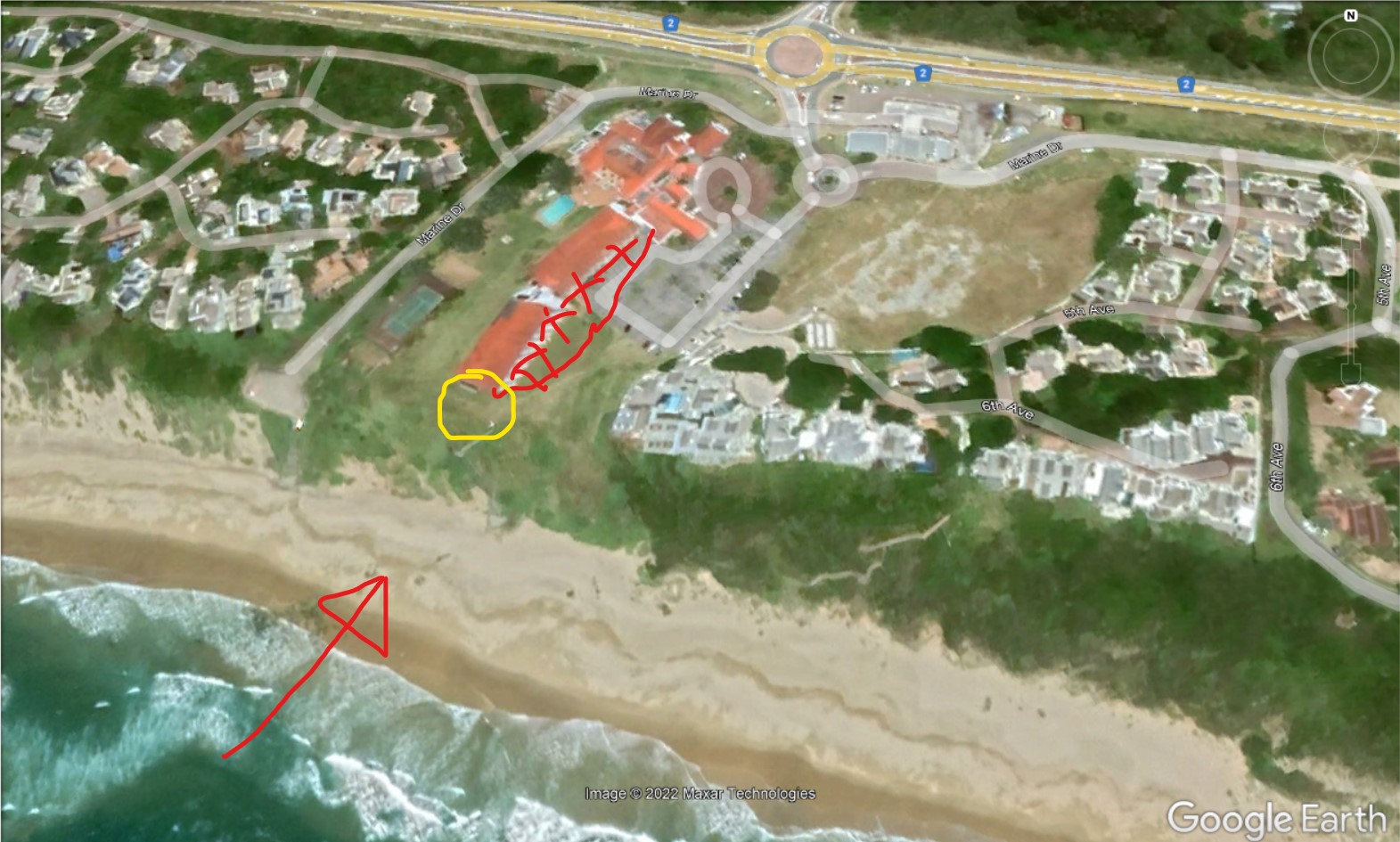
SW Lifty bit!
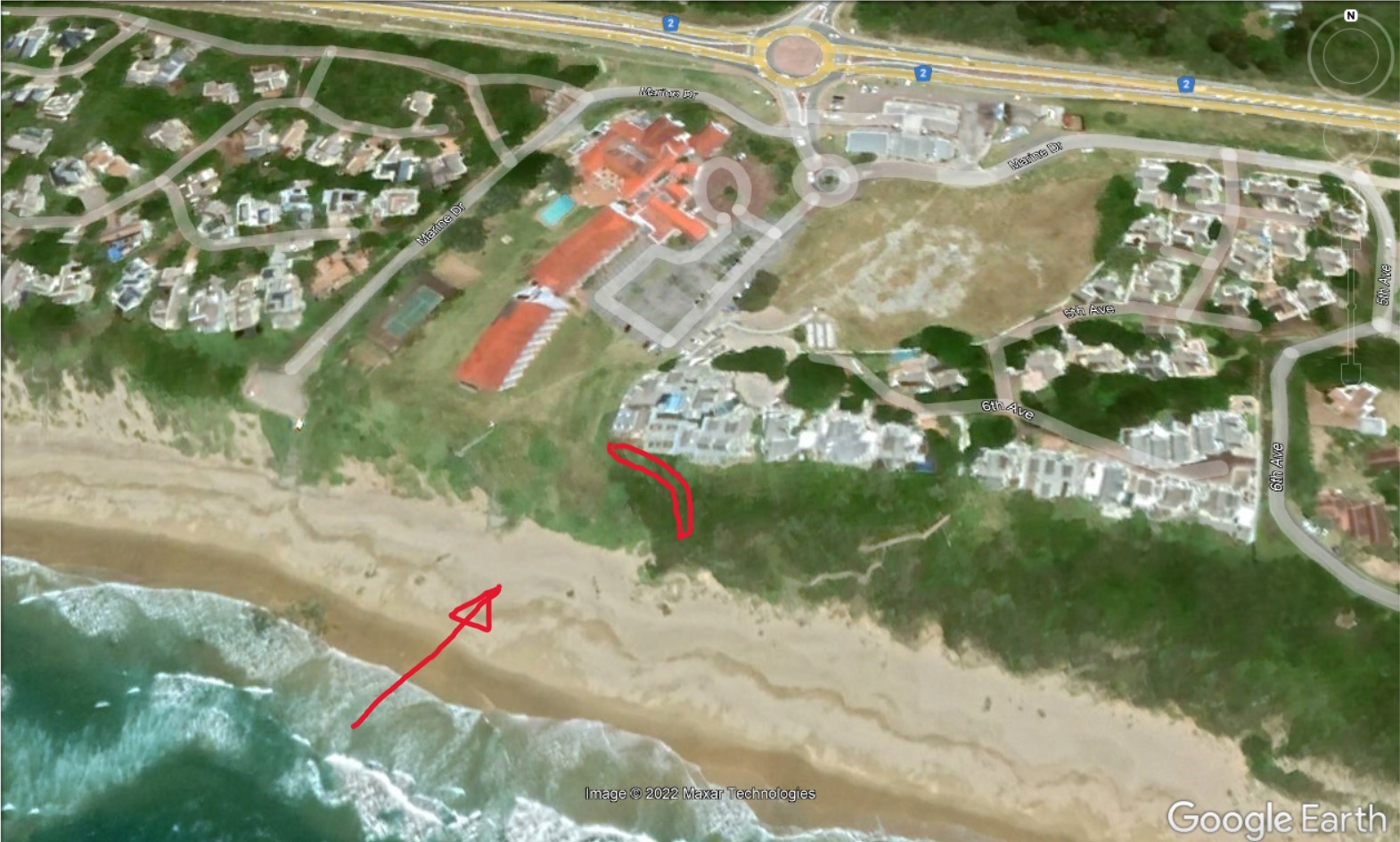
Caught in strong winds
The typical scenario is for the wind to be slightly cross from the west. In the unlucky case that you do get caught in strong winds and find yourself unable to penetrate into wind, turn directly towards the ocean – fly at nighty degrees to the cliffs facing the ocean. You will crab sideways relative to the ridge but you will be moving forward to the beach. In this way you at least will end up over the safety of the beach even if you are moving away from the hotel to the east. Once you are away from the cliffs you can either do big ears with bar to get down and land on the beach – often lower down near the waters edge at the base of the cliffs the wind is lighter, and you should be able to land relatively safely. However, if you are already far to the east of the hotel it might be better to continue onwards to Kleinkrants and the Car Park. Here there are safer options of beach landings in strong winds – and even if you get dragged, the beach scrubs will quickly catch your wing and stop you versus the rocks or buildings at the Hotel! ?
Be super cautious in a SSW direction, when the winds are directly onto the ridge. In this case stay far forward of the cliffs if it is windy. You do not want to get blown over the back in this area. lol
Landing tips.
- Positioning is king! Make sure you are in the right position to proceed with your landing approach. If you are high, go out to sea and loose some height. Try not to complicate your approach by flying to your approach spot while still a mile up! Enjoy the flying off to the side while judging when you are at the right height and spot to proceed with your landing approach.
- Use of brakes for glide control. On the typical coastal day you can pull your brakes to your carabiners (some gliders even more) to help degrade your glide and sink rate because the air is smooth. Of course, it is a good idea to know your glider’s stall point. ?
- Use the butterfly technique for that extra glide degradation – but make sure you know how!
- Use of big ears – this is useful only if you are very high. Low down you often shoot forward in the process of applying big ears (since you are no longer applying brakes to degrade your glide – this counters your intent of not overshooting). ?
- Strong winds come in low. This is an advance technique used by the experienced pilot – but keep it in mind for future use as your flying improves. :)
- Finish off the landing by turning the glider into the wind! Strong or light winds.
- In fresh winds, remember to go hands up right after touchdown to enable you to turn without being plucked off your feet. (When you go hands up the glider shoots forward and looses part of its lifting force, ie angle of attack becomes smaller.) ?
- Don’t be shy to land at the bottom. Walking up the steps is good for you! ?
Common mistakes.
- Landing too close to the wrong part of the buildings. (Side rotors or worse!)
- Picked up on launch (remember the extra lift component near the front of this ridge!) (So much fun to watch though!) lol
- Turning down wind after launch.
- Flying or turning on the wrong side of the pointy bits.
- Overshooting due to a) bad positioning and b) not using brakes for glide control.
- Landing downwind on the beach! (Also fun to watch!) Lol
- Being pulled off your feet when trying to turn and drop the glider because you don’t ease up on the brakes after touchdown!
Final thoughts.
I will just leave you with 3 very important words.
Practice practice practice! :)

